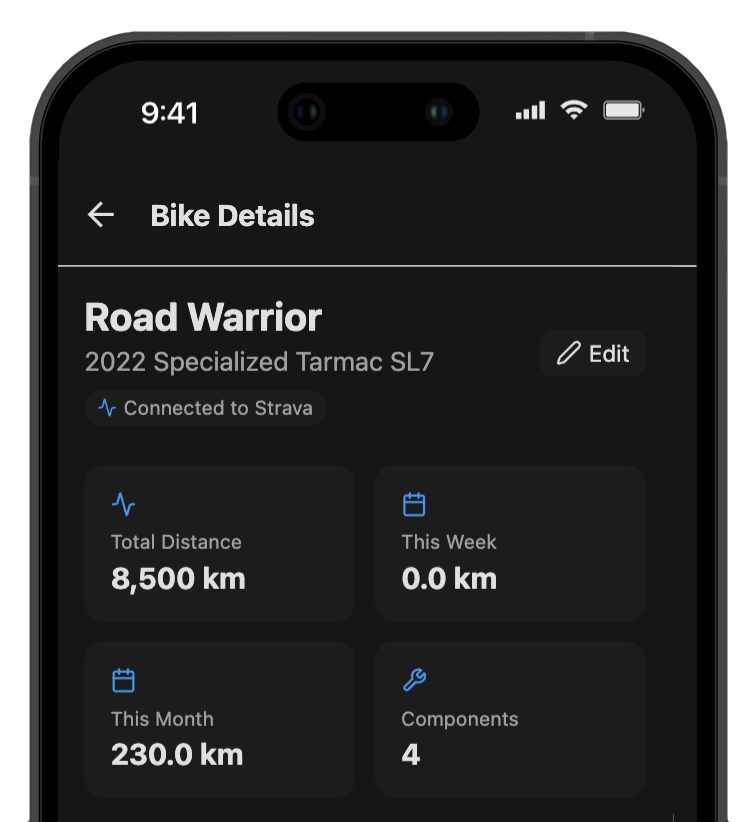
Maximizing Your Strava Data for Better Maintenance
Tips and tricks for using your Strava activity data to optimize your bike maintenance schedule and improve performance.
Strava isn't just for tracking your rides and competing with friends—it's a goldmine of data that can revolutionize how you approach bike maintenance. By analyzing your riding patterns, you can create a maintenance schedule that's perfectly tailored to your actual usage.
Understanding Your Riding Data
Key Metrics to Track
- Distance: Total miles/kilometers ridden
- Elevation Gain: Climbing puts extra stress on components
- Ride Frequency: How often you're using your bike
- Weather Conditions: Rain and mud accelerate wear
- Terrain Type: Road vs. gravel vs. mountain biking
Creating Data-Driven Maintenance Schedules
Chain Maintenance
Instead of following generic "every 100 miles" advice, use your Strava data to determine actual chain wear patterns. Riders who frequently climb hills or ride in wet conditions may need more frequent chain maintenance.
Pro Tip: Elevation-Based Maintenance
Track your cumulative elevation gain. Research shows that every 3,000 meters (10,000 feet) of climbing creates similar drivetrain stress as 300km of flat riding. Use this ratio to adjust your maintenance intervals.
Brake Pad Monitoring
Analyze your descent data to predict brake pad wear. Long, steep descents generate more heat and wear than gradual declines. Use your elevation loss data to anticipate when brake pads will need replacement.
Tire Wear Patterns
Different surfaces affect tire wear differently. Track the percentage of your rides on various terrains to predict when tires will need replacement and which type of tire performs best for your riding style.
Seasonal Maintenance Planning
Use winter riding data to assess component wear and plan spring maintenance.
- • Analyze salt/wet weather exposure
- • Check bearing condition
- • Plan cable replacements
Review summer riding data to prepare for harsh conditions.
- • Assess component condition
- • Plan protective measures
- • Schedule deep cleaning
Advanced Strava Analysis Techniques
Power Data Integration
If you have a power meter, use normalized power data to understand the actual stress on your drivetrain. High-intensity efforts create more wear than easy spinning, even at the same distance.
Weather Impact Analysis
Strava records weather conditions for each ride. Use this data to understand how different conditions affect your bike:
- Wet rides require more frequent cleaning and lubrication
- Dusty conditions accelerate chain and bearing wear
- Temperature extremes can affect tire pressure and component performance
- Salt exposure in winter requires immediate post-ride cleaning
Real Example:
A cyclist riding 200km per week in dry conditions might service their chain every 2,000km. The same cyclist riding 50% of their miles in wet conditions should service every 1,200-1,400km to maintain optimal performance.
Setting Up Automated Alerts
Many third-party apps can connect to Strava and provide maintenance alerts based on your actual riding data. These tools can:
- Track component mileage automatically
- Send reminders based on your riding patterns
- Adjust schedules for seasonal changes
- Account for different bikes in your stable
VeloBuddy Integration
VeloBuddy automatically syncs with your Strava account to create personalized maintenance schedules based on your actual riding data. No more guessing—just smart, data-driven maintenance reminders.
Making Data-Driven Decisions
The key to successful data-driven maintenance is consistency in tracking and analysis. Regular review of your Strava data helps you identify patterns and optimize your maintenance schedule for better performance and longer component life.
Ready for Smarter Bike Maintenance?
Join the VeloBuddy waitlist and never miss another maintenance task again.